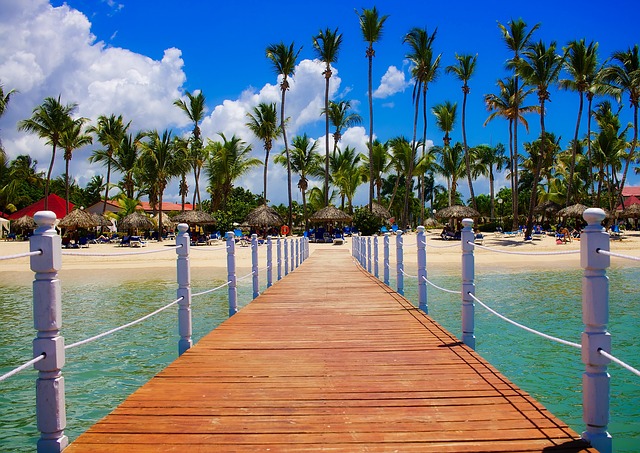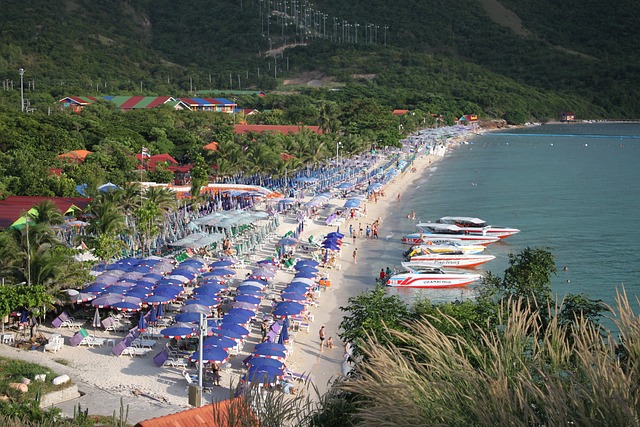A Caribbean country, the Dominican Republic shares the island of Hispaniola with Haiti. Golf courses, resorts, and beaches are some of its most popular features. It is well-known for its beautiful beaches, but it also has the Caribbean’s tallest peak, Pico Duarte, which offers amazing trekking options.
There have enthralling places with a treasure of fascinating entertaining facts you must know. Apart from this, it is also known for Dominican Republic facts, fun facts, culture facts, food facts, people facts, and travel facts. All interesting facts about the Dominican Republic you will know in this article. Stick with it until the end.

Interesting Dominican Republic Fun Facts
Certainly, here are the top famous Dominican Republic fun facts you must know:
Caribbean Gem: The Dominican Republic is a stunning Caribbean nation located on the eastern side of the island of Hispaniola.
Geographical Diversity: It boasts an incredible range of landscapes, from lush rainforests and mountains to pristine beaches and even deserts.
Tallest Peak: Pico Duarte stands tall as the Caribbean’s highest mountain, offering adventurous hikers spectacular vistas.
Historic Firsts: Santo Domingo, the capital, is home to the Americas‘ first cathedral, university, and castle, showcasing the nation’s rich history.
Cigar Excellence: The country is renowned for producing some of the finest cigars globally, crafted by skilled artisans.
Merengue Birthplace: The lively rhythms of merengue were born in the Dominican Republic, contributing to its vibrant music scene.
Bachata Origins: This musical genre also hails from the Dominican Republic, known for its emotional melodies and expressive lyrics.
Whale Watching: The nation’s waters host one of the largest seasonal gatherings of humpback whales, making it a prime spot for whale watching.
Top 5 Fun Facts on Dominican Republic History
Certainly, here are the top 5 fun facts about Dominican republic history:
- First Permanent European Settlement: The Dominican Republic was home to the first permanent European settlement in the Americas, founded by Christopher Columbus’s brother, Bartholomew Columbus, in 1498.
- Birthplace of Chocolate: The Dominican Republic is known for producing some of the world’s finest cacao beans, making it an important contributor to the global chocolate industry. The country’s cacao has a rich history dating back to indigenous use.
- Pirate Paradise: During the 17th century, the Dominican Republic’s coastal areas were a haven for pirates and buccaneers. They often used the island as a base for their raids on Spanish ships.
- Impact of the Trujillo Era: The 31-year dictatorship of Rafael Trujillo, which ended in 1961, had a unique impact on the nation’s culture. Trujillo ordered the renaming of numerous towns and even changed the names of days and months to honor himself and his family.
- Surviving a Tsunami with Drums: In 1946, a devastating tsunami struck the Dominican Republic after a powerful earthquake. Legend has it that people played drums and loud music in coastal towns, believing it would scare away the approaching waves.
These fun historical facts provide a glimpse into the colorful and intriguing past of the Dominican Republic, showcasing its rich heritage and unique experiences.
Top 8 Interesting Facts About Dominican Republic Culture
Certainly, here are some captivating facts about the culture of the Dominican Republic:
Cultural Fusion: Dominican culture is a vibrant blend of Indigenous Taino, Spanish colonial, and African influences, creating a unique and diverse cultural tapestry.
Music and Dance: Merengue and bachata are the country’s signature music genres, reflecting the lively spirit of the people. These rhythms are deeply ingrained in daily life, from celebrations to social gatherings.
Carnival Celebrations: The Dominican Republic’s carnival is a spectacular showcase of color, music, and dance. Held in February, it features elaborate costumes, traditional characters, and energetic parades.
Religious Traditions: The Dominican Republic is predominantly Catholic, and its religious festivals, like Semana Santa (Holy Week), showcase a blend of Catholic rituals and indigenous influences.
Santería Influence: Santería, a syncretic religion with African roots, is practiced by some Dominicans. It blends elements of African spirituality with Catholicism and has a strong cultural presence.
Visual Arts: The country boasts a thriving art scene, with local artists producing vibrant paintings, sculptures, and crafts that often reflect themes of identity, history, and social issues.
Literary Giants: The Dominican Republic has produced world-renowned authors such as Julia de Burgos, Juan Bosch, and Junot Díaz, who have contributed significantly to the literary world.
Family and Community: Family values and close-knit communities are central to Dominican culture. Extended families often live in the same neighborhoods and gather frequently for celebrations and support.
Top 7 Unique Facts on Dominican Republic People
Certainly, here are the Dominican Republic interesting facts about their people:
- Double Nationality: The Dominican Republic shares the island of Hispaniola with Haiti, and there’s a unique phenomenon called “binationality,” where some Dominicans and Haitians share dual citizenship due to family ties that span both sides of the border.
- Surnames and Lineage: It’s common for Dominicans to have two last names, one from each parent. The father’s surname is followed by the mother’s surname, showcasing a strong emphasis on lineage and family connections.
- “Cibaeños” and “Capitalinos”: Dominicans often identify themselves as either “cibaeños,” referring to those from the northern region of Cibao, or “capitalinos,” for those from the capital city, Santo Domingo. This regional pride plays a significant role in cultural identity.
- Unique Nicknames: Dominicans have a tradition of giving affectionate and sometimes humorous nicknames, or “sobrenombres,” that reflect personality traits, physical characteristics, or even amusing incidents. These nicknames are often used more frequently than given names.
- “Plátano Power”: Plantains, known as “plátanos,” is a dietary staple and cultural symbol. Dominicans humorously claims that if you haven’t had plantains in a week, you might not be a real Dominican.
- Baseball in DNA: Baseball is considered a national obsession. Many Dominicans grow up playing baseball in the streets or fields, dreaming of becoming the next big MLB star. There is a deep passion for the sport in their blood.
- Inventive Transportation: When it comes to transportation, Dominicans can be incredibly resourceful. From fitting an entire family on a single motorbike to creatively loading buses with goods and people, their ingenuity shines through.
Top 7 Funny Facts about Dominican Republic Food
Certainly, here are some funny and exciting things to know about Dominican republic food:
- Plantains: The Chameleon Ingredient: In the Dominican Republic, plantains are like the magician of the kitchen – they can be fried, mashed, boiled, and even turned into chips, making them the ultimate food chameleon.
- Sancocho: The Never-Ending Stew: Sancocho, a hearty stew, is often compared to the Energizer Bunny – it keeps going and going. It’s said that the longer you cook it, the better it gets!
- Avocado Obsession: Dominicans have an avocado obsession that’s practically a lifestyle. They put avocado on everything – sandwiches, rice, salads, and even desserts. You might say they’ve found the secret to the “avo-lution” of taste.
- Tropical Time Warp: The concept of “Dominican time” might make you question the laws of physics. If an event is scheduled to start at noon, it’s perfectly acceptable to arrive around 1:30 PM. Time flies differently in the Dominican Republic.
- Mango Mayhem: During mango season, the streets become a war zone – not because of conflict, but because mangoes are raining down from trees! Beware the falling fruit when you least expect it.
- Beans: The Musical Fruit: Dominican-style beans, also known as “habichuelas,” are known for causing some musical performances in the digestive department. It’s all part of the gastronomic symphony!
- Empanada Enigma: Ordering an empanada can be like solving a riddle. Depending on where you are in the country, empanadas might look, taste, and even be named differently. It’s a true Dominican mystery tour for your taste buds.
Top 7 Important Facts about Dominican Republic Travel Destinations
Certainly, here are some important facts about travel destinations in the Dominican Republic:
- Punta Cana Paradise: Punta Cana is a renowned tropical paradise, famous for its pristine beaches, luxurious resorts, and world-class golf courses. It’s a top destination for those seeking relaxation and indulgence.
- Historic Santo Domingo: The capital city, Santo Domingo, is a UNESCO World Heritage Site and the oldest European settlement in the Americas. Its charming colonial district, Zona Colonial, is a must-visit for history buffs.
- Adventure in Jarabacoa: Nestled in the mountains, Jarabacoa offers adventure enthusiasts a playground for activities like hiking, white-water rafting, and exploring waterfalls in a lush, cool climate.
- Whale-Watching in Samaná: The Samaná Peninsula is a prime spot for witnessing the annual humpback whale migration. From January to March, these majestic creatures put on a captivating show.
- Cultural Santiago: Santiago, the second-largest city, is a vibrant cultural hub known for its lively festivals, music scene, and local craftsmanship. It offers a taste of Dominican life away from the coast.
- Eco-Tourism in Barahona: Barahona is an emerging eco-tourism destination, featuring dramatic landscapes, lush forests, and unspoiled beaches. It’s an off-the-beaten-path gem for nature lovers.
- Historical Puerto Plata: Puerto Plata is a charming city with a rich history, featuring 16th-century architecture and the iconic Mount Isabel de Torres, accessible by cable car for breathtaking views.
To Conclude
The Dominican Republic is an enthralling Caribbean country with a rich tapestry of history, culture, and different travel options. The country offers a wealth of experiences for vacationers, from its breathtaking beaches and majestic mountains to its active music scene and unique culinary traditions.
Additionally, it is known for Dominican Republic facts, fun facts, culture facts, food facts, and people facts.


